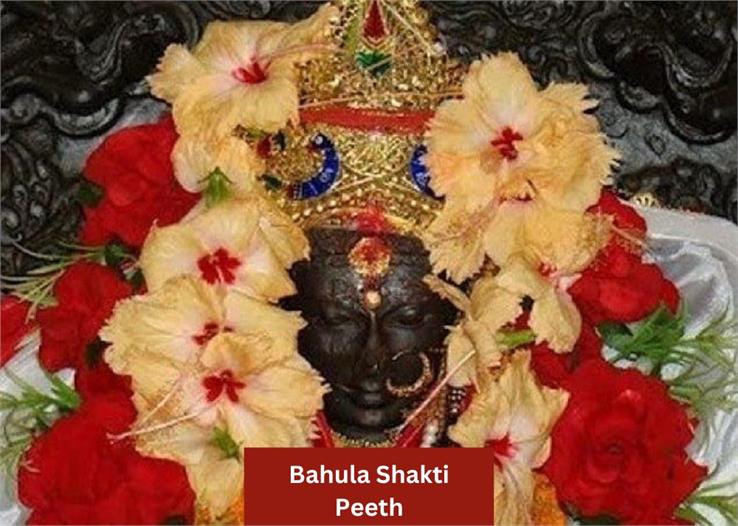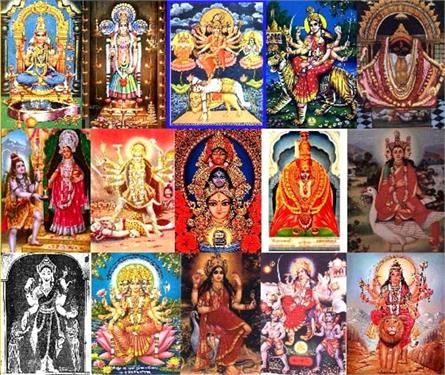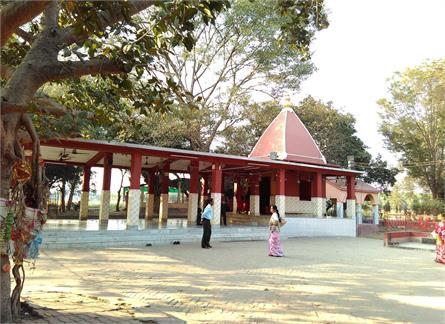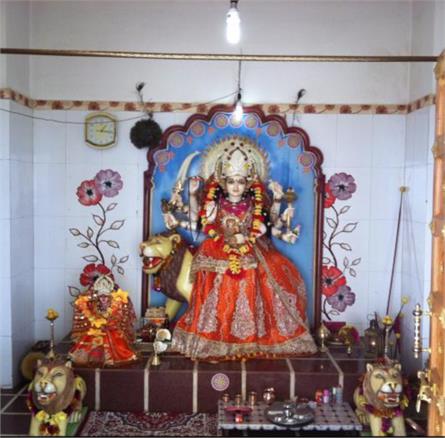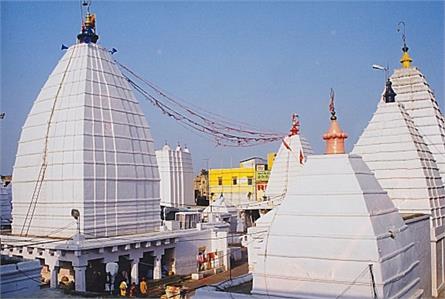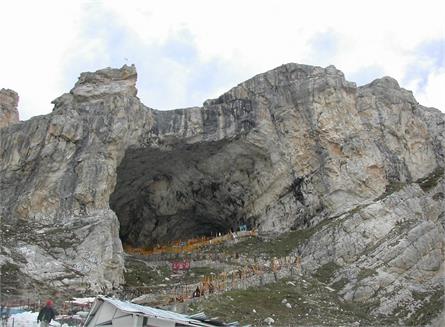Bahula shakti peeth - Information, Temple timings & how to Reach
"Indian temples are not only architectural marvels but also spiritual sanctuaries that connect us to our rich cultural heritage and draw us closer to the divine."
The picturesque Bahula shakti peeth is located in West Bengal's Bardhaman district in the little village of Bahula. This temple is dedicated to Goddess Bahula, a representation of Goddess Durga in Hindu mythology. Thousands of devotees and visitors are drawn to the temple each year by its spectacular architecture and tranquil atmosphere. The temple was constructed in the 18th century by Rani Bhavani, a monarch of the Bardhaman family, and has a rich past.
Since then, the temple has undergone numerous modifications and presently represents traditional Indian architecture. Indian culture, traditions and essence essentially thrive on the tight-knit fragments of faith and belief. The community and its residents are believed to be safeguarded by Goddess Bahula, the temple's principal deity. Luck and prosperity are deeply intertwined with the presence of the temple. In addition to the primary deity, Goddess Bahula, the temple complex is home to several shrines honouring other gods and goddesses, such as Lord Hanuman, Lord Ganesha, and Lord Shiva. The temple is ideal for reflection and meditation because of its peaceful atmosphere and lovely surroundings. The place allows you to take a deep dive within yourself and converse with yourself. It most definitely brings calm to your chaos.
Goddess Bahula shakti peeth
The Hindu deity Bahula is sometimes referred to as Bahu or Bahuladevi. West Bengal and Odisha - The land of lord Jagannath, two Indian states, are where she is mostly worshipped. Her name translates from Sanskrit as "the one with many arms," She is frequently seen with several arms, each clutching a different thing. Since Bahula is frequently linked to fertility, her believers are said to be blessed with a bountiful harvest and progeny. She is also revered as a guardian against illnesses and evil spirits and a protector of cattle.
According to certain myths, the goddess Durga, revered as a strong defender and fighter, appears as Bahula. A king named Virasena is said to have been visited by Bahula, who requested that he erect a temple in her honour. The monarch agreed, and people seeking Bahula's blessings began to assemble at the temple.
Another legend about Bahula describes a monster named Bakasura who terrorized a community. When the villagers prayed to Bahula for assistance, she materialized in front of them, outfitted with numerous weapons. She vanquished Bakasura and made the village peaceful.
Bahula shakti peethis revered in some parts of India as a manifestation of the goddess Kali, who is frequently portrayed as a strong warrior and destroyer of evil. According to these beliefs, Bahula represents Kali's maternal and protective attributes. Bahula is seen as a strong and generous goddess who grants her followers protection, fertility, and prosperity. Her devotion plays a significant role in the vast and varied tapestry of Hindu mythology and spirituality.
Must Read: List 51 Shakti Peeth in India
Bahula Temple Architecture
Bahula shakti peeth architecture is typical of older Hindu temples. The temple is square in shape and is constructed on a high pedestal. Its exterior is made of terracotta and features beautiful carvings and decorations. It is built of stone and brick. The temple features a single entrance that opens onto a sizable courtyard bordered by numerous small shrines.
The statue of Bahula shakti peeth, made of black stone and embellished with gold embellishments, is kept in the temple's main shrine. Basuli and Dakshin Ray, her two consorts, are depicted on either side of the painting. The shrine's inner sanctum is ornamented with intricate carvings and sculptures of many deities. The numerous terracotta panels that decorate the Bahula shakti peeth walls are one of its distinctive features. These panels show both typical rural Bengali life and scenes from Hindu mythology.
Richly detailed, the panels provide a fascinating look into the region's cultural and social history. A pond that is deeply revered is also present at the temple. According to devotees, a dip in the pond can treat several illnesses and bring good fortune. Bahula Devi Temple's architecture is a stunning illustration of conventional Hindu temple construction.
Also Read: 12 Jyotirlinga
More Information about the Temple
Temple Timings
The temple is open to visitors year-round, though the hours may change slightly according to the season.
The temple is often open from early morning till late at night. The followings are the darshan timings or the times when devotees can pray and see God:
Morning
6:00 am to 12:00 pm, Monday through Saturday
5:00 am to 12:00 pm on Sunday
Evening
4:00 pm to 8:00 pm, Monday through Saturday
4:00 pm to 9:00 pm on Sunday
Please be aware that these times could change during holidays and other special occasions. Before going, checking the temple's hours is always a good idea, especially if you intend to attend any special occasions or festivals.
Things to do
On your visit here, you can also take a short excursion trip through the village of Bahula and splurge a little on the lovely handcrafted things, including terracotta ceramics, bamboo crafts, and textiles. Bahula Devi Mandir displays India's rich cultural heritage. For anyone looking for spiritual consolation and an insight into the nation's history and its beautiful temples, this place is a must-visit place to witness its magnificent architecture, picturesque setting, and spiritual significance. Visiting such places of significance provides a haven from the stress of everyday life and a chance to commune with God and one's inner self.
Special Occasions
Throughout the year, the temple hosts many noteworthy events and festivals that bring many followers from the surrounding area.
- Navratri: The nine-day Navratri festival is observed twice a year, once in the spring (Chaitra Navratri) and once in the autumn (Sharad Navaratri). Devotees pray and carry out specific puja procedures to honour the goddess Bahula during this festival, which also sees the temple decked with lights and flowers.
- Rath Yatra: At the Bahula Devi Temple, the Rath Yatra, also known as the Chariot Festival, is celebrated with glee and enthusiasm. The goddess's idol is carried out from the temple in a large celebratory procession during this celebration.
- Durga Puja: The Bahula Devi Temple participates in Durga Puja, one of the most significant celebrations in West Bengal. During Durga Puja, worshippers throng the temple to offer prayers and ask for the goddess's blessings. The temple is exquisitely decked with bright lights, flowers, and artwork.
- Kali Puja: The goddess Kali, revered at the Bahula Devi Temple, is honoured during this event known as the Kali Puja. People perform special puja ceremonies for the goddess during this occasion.
- Pohela Boishakh: At the Bahula Devi Temple, Pohela Boishakh, the Bengali New Year, is celebrated with great enthusiasm. Devotees pray and seek guidance in the temple's rangoli- and flower-decorated rooms.
How to Reach
Here are different methods for getting to the temple:
- By Road: The temple is easily accessible by bus or cab due to its good road connectivity. The distance between the temple and the closest large town, Katwa, is 12 kilometres. You can take a bus or taxi from Katwa to the temple. Additionally, Bardhaman and Durgapur, two nearby towns, are easily accessible from the shrine.
- By Train: Katwa Junction, which has good connections to important Indian towns, is the closest railway station to the Bahula Devi Temple. You can take a bus or taxi to the temple from the station.
- By Air: Netaji Subhash Chandra Bose International Airport in Kolkata, located about 150 miles from the Bahula Devi Temple, is the closest airport. You can take a bus or cab from the airport to the temple.
